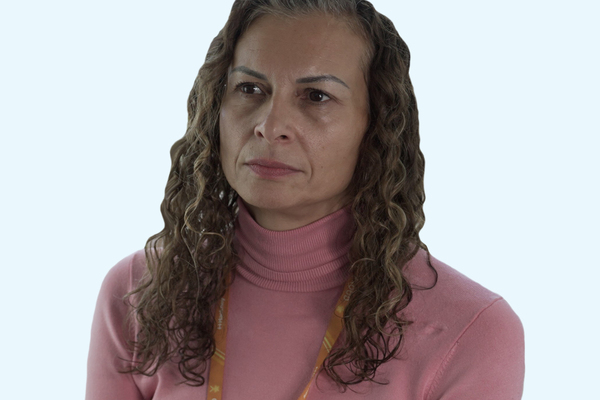You are viewing 1 of your 1 free articles
Who holds the power: chair or chief executive?
Maintaining a healthy dynamic between the chair and the chief executive is critical to housing providers’ success, writes David Levenson, founder of Coaching Futures
“The chair runs the board and allows the chief executive to run the organisation.”
So writes Patrick Dunne, author of Boards and, for me, the best and most practical guide available on how to govern a business or organisation effectively. Professor Bob Tricker, a leading authority in the governance world for over four decades (and still going strong at 91) says, “The relationship between the chair and the CEO is one of the most crucial, most sensitive, and most subtle relationships in the company”.
Professor Tricker is alluding to how egos are an important factor in the chair/chief executive dynamic, and a clash of personalities at its apex has, in many cases, proved to be ruinous for many enterprises.
Let us imagine a housing provider as a see-saw in a children’s playground. On either side, closest to the fulcrum, sit the chair and chief executive, the most grown-up of the children. The fulcrum represents the conduit through which the organisation’s stewardship and management roles interact. Being closest to the fulcrum places both chair and chief executive into the critical relationship outlined by Professor Tricker, where they need to ensure the governance of the housing provider is appropriately balanced.
Imagine now that the two ‘grown-up’ children on either side of the see-saw have different weights and sizes. Behind the larger child all the way back to the see-saw’s end are children and adults of similar sizes whose feet are firmly on the ground. The smaller child, with perhaps two or three friends seated behind, is left dangling permanently in mid-air. Everything seems out of balance.
Back in the 1970s and 1980s, corporate Britain was run by driven entrepreneurs – men (almost always men) like Lord Arnold Weinstock at GEC (later Marconi), the electronics company, and Sir John Harvey-Jones at ICI. Sir John was effectively chair and chief executive, in total charge.
Lord Weinstock was a different kind of company dictator; famously he insisted on the traditional title of managing director when he took over at GEC in 1963 and had no desire to chair the board of directors, whom he largely treated as a rubber stamp.
He commanded the entire business’s resources. At its peak, GEC had a balance sheet worth $11bn and roughly 240,000 employees on his side of the see-saw, leaving the board of non-executive directors chaired by former cabinet minister Lord Jim Prior dangling in mid-air.
Interestingly, housing associations back in the day replicated the corporate world, with directors, as chief executives were known, ruling the roost.
“The talk was of ‘professionalising’ the governance of housing associations and the role of the board chair was elevated to a position of greater parity with the director/chief executive”
The likes of George Barlow at Peabody, Don Wood at London & Quadrant, Donald Hoodless at Circle 33 and Notting Hill Housing Trust, Alan Kilburn at Home Group and Eric Armitage at North British Housing Association (Places for People) were among the sector’s biggest beasts, while the chairs of the board were largely invisible.
In 1992, the first UK corporate governance code recommended separating the roles of chair and chief executive in addition to the appointment of non-executive directors and the creation of audit committees.
The first code of governance for housing associations, authored by former Circle 33 executive Julian Ashby, who later chaired the housing regulator and Paradigm Housing Group, drew on the 1992 Cadbury Report on corporate governance, in many respects from a non-profit perspective.
Previously run by voluntary committees, the idea that housing associations’ governance would be in the hands of boards of non-executive directors fundamentally changed their structure and culture at a time when private finance for social housing development was pouring into their coffers.
The talk was of ‘professionalising’ the governance of housing associations and the role of the board chair was elevated to a position of greater parity with the director/chief executive. Cadbury, together with the Higgs Review 2003, has largely been retained as the model for housing provider governance for over 30 years.
The roles of chair and chief executive have developed along the lines of the model recommended by Mr Dunne and Professor Tricker – they reside on either side, close to that see-saw fulcrum of governance. That’s not to say that the model works in every case. As for any process involving human interaction, the chair/chief executive dynamic must be worked at, not only by the individuals themselves, but also by the people and systems that inhabit either end of the see-saw.
In Lord Weinstock’s day, the chief executive in UK listed companies like GEC was all-powerful, which made it very difficult for the non-executive directors to challenge the business’s strategy. Nowadays, it is a universally held view that one of the chair’s key roles is to ensure that there is a sound strategy in place and the board has visibility on its development and delivery. On strategy, the chief executive is answerable to the board, not solely to the chair to whom they report.
Governance experts broadly agree that how the board and management interact over strategy is another critical success factor for an enterprise. Mr Dunne comments that the board should have oversight of the strategic process and management supports the process, with the resultant strategy being jointly owned. Professor Tricker states that the board has a role in strategy formulation as part of ensuring that there is shared purpose and alignment about the enterprise’s direction.
Where responsibility lies for strategy formulation may depend on whether executives or non-executive directors wield more influence on the board. In the housing provider context, chief executives and other executives have become normalised as board appointees only in the past 20 years.
Another key factor in the dynamic between the chair and chief executive is quite simply the length of time they have been in the role, which may also relate to their allegiance to the enterprise. Lord Weinstock’s allegiance to GEC, coupled with his long tenure as managing director, meant his authority was virtually unchallenged by the board for almost 30 years.
At the other end of the scale, some small charities can be impacted adversely by the excessive influence of a founder chair or dominant chief executive.
“Having recognised the crucial importance of the chair/chief executive dynamic and getting the balance right at the fulcrum of governance, the next key success factor is setting the right tone on either side”
In the housing sector, where board tenures are limited to six or, by exception, nine years and governed by regulation, there have been many examples of chief executives being in post for over 20 years. This raises a question about where authority ultimately lies and whether accountability for the executives’ actions to the board can be sustained.
Having recognised the crucial importance of the chair/chief executive dynamic and getting the balance right at the fulcrum of governance, the next key success factor is setting the right tone on either side. This involves creating a relationship based on civility and respect, coupled with an openness and willingness to debate and challenge, without which relationships can become toxic and start to fragment across the enterprise.
Awareness is the critical attribute needed by both chair and chief executive; awareness of self, of each other, of their relationship and of their impact on colleagues.
Awareness is a trait that is natural for some, but a skill that can be acquired by others. It takes practice, which can be enhanced with the help of a coach or mentor.
What is sometimes underestimated in the debate about the chair/chief executive dynamic is the contribution others can make, in particular members of the board. The chair and chief executive should set the tone, but board members have an important role in supporting a positive dynamic at the fulcrum. Skilled non-executive directors can spot where the relationship may be going awry in terms of conflict or, at the other end of the scale, collusion between the chair and chief executive.
When the chair behaves in an overzealous fashion or the chief executive overreaches, the board can help to ensure that balance is restored and awareness is exercised. Some housing provider boards now recognise the value of nominating a member of the board as the senior independent director, an innovation introduced by the Higgs Review that has been taken up across the whole NHS Foundation Trust sector.
The senior independent director has a formal role, which is to manage the chair’s annual appraisal, but can also act as a helpful conduit between the chair and chief executive, especially when this relationship is undergoing challenges.
David Levenson, founder, Coaching Futures
Sign up for our daily newsletter
Already have an account? Click here to manage your newsletters












